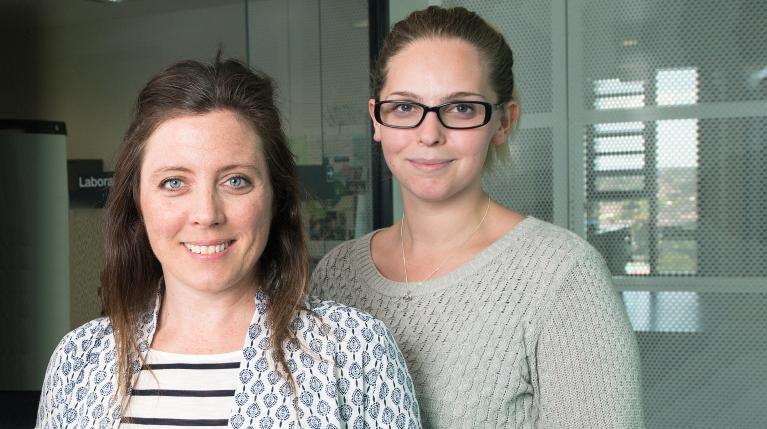Doctor’s extraordinary legacy continues to power work into rare muscle disorders
In the 1980s, in a clinic in America, Indianapolis neurologist Dr Charles Bonsett used adenylosuccinic acid (ASA) for the first time to treat fourteen children with Duchenne muscular dystrophy. All but one (who died from an unrelated medical problem) had some slowing of their disease.
Dr Bonsett dedicated his life to getting ASA approved as a treatment for Duchenne muscular dystrophy. Now, thanks to his ground-breaking work and the visionary support of his family, Victoria University's Associate Professor Emma Rybalka is on the verge of getting ASA back into clinical trials.
A legacy of innovation
Duchenne muscular dystrophy is a fatal, genetic disease caused by a missing protein which triggers extensive muscle wasting. Those with the condition lose their ability to walk during childhood and die from cardiorespiratory failure during early adulthood, and the average life expectancy is just 28 years of age. It's estimated around 20,000 children worldwide are diagnosed with Duchenne every year, and there is no cure.
But this is a story about hope, and how a legacy of innovation could offer a brighter future for the next generation of children.
In her PhD thesis on Duchenne in 2008, Associate Professor Rybalka referenced Dr Bonsett’s research into ASA. Much of the research prior to Dr Bonsett's work had centred on the deficiency of a structural protein called dystrophin, which is essential for the proper function of muscle. Dr Bonsett instead focused on a metabolic approach to the disease, which led him to identify ASA as a potential treatment. An approach that made sense to Associate Professor Rybalka, who struck up a friendship with Dr Bonsett that eventually led to research collaboration.
After his passing, Dr Bonsett's Estate supported Associate Professor Rybalka and her PhD student, Dr Cara Timpani, to continue their research into ASA, which they believe could be used to treat the metabolic problems in Duchenne and other muscle wasting diseases.

Their work caught the attention of Californian-based parents Priyanka Kakkar and Naveen Baweja. They were desperately seeking treatment options for their two children, who were both diagnosed with ADSSL1 myopathy - an extremely rare and fatal genetic disorder that causes muscle function failure, loss of mobility in arms and legs, and impacts lung and heart function. People living with ADSSL1 also lose the ability to chew and swallow. It's thought only around 200 people around the world live with ADSSL1.
Associate Professor Rybalka is now the pre-clinical lead on a research Investigational New Drug (IND) application to the US Food and Drug Administration (FDA) for the purpose of clinical development of ASA in ADSSL1 myopathy patients sponsored by CureADSSL1, a not-for-profit started by Priyanka and Naveen. If the application is successful, the trial can begin this year. Her team at VU will be doing a pre-clinical animal trial alongside to help build a body of evidence that will hopefully support the existing research, providing hope to all the families of children diagnosed with a muscle wasting condition. Associate Professor Rybalka said:
The pinnacle of my career would be if I could help people with my research. If a child gets this drug and gets relief from it, I'm happy. It's a lifetime of work for a biomedical researcher to see impact. So I would feel very fortunate if at the end of my career I could see that.
As for Dr Bonsett, whose research began this story, his legacy continues to power research into ASA as a treatment for muscle wasting conditions, and could be the answer to the prayers of families like Priyanka and Naveen.
Support our research
Donate to VU and help support our research to find better treatments and cure for rare diseases and disorders.